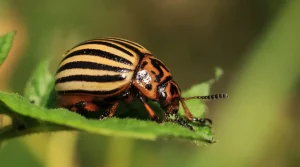During the flea and tick season, a significant number of pet owners experience apprehension and concern. Fleas and ticks are parasitic organisms that can cause harm to both domesticated animals and humans alike. In the event of a rise in temperature, one may inquire as to the commencement of flea and tick season. The assemblage of crucial data regarding fleas, ticks, and their associated hazards has been accomplished by our team of proficient entomologists.
Behavior of Fleas & Ticks
Ticks and fleas are ectoparasitic arthropods that feed on the blood of their hosts. These insects commonly inhabit outdoor environments characterized by dense vegetation such as long, thick grass and wooded areas. Both of these arthropods are well-known for the destruction they can inflict and the discomforting, sore punctures they can administer.
Canines are often infested with fleas, which have the ability to thrive in various environments, including residential dwellings. Flea adults lay eggs on their hosts, and these eggs undergo rapid development into larvae. The eggs of fleas have the potential to undergo hatching within a span of two weeks, thereby leading to a swift dissemination of the infestation. Although rare, indoor tick infestations may occur as a result of transportation on clothing or through the introduction of ticks by domestic pets. Parasitic infections can cause discomfort and pose potential harm.
Why Be Cautious of Fleas & Ticks
Although fleas and ticks exhibit a preference for non-human hosts, their occasional feeding on humans can result in significant health complications. Ticks have the ability to transmit various diseases to humans, such as Lyme disease, Rocky Mountain spotted fever, and alpha-gal syndrome. Fleas have the potential to function as both parasites and vectors of disease, regardless of their known status as disease carriers.
Additionally, these creatures possess a disagreeable tendency to engage in biting behavior, which can range from bothersome to highly distressing. Inadequate treatment of tick and flea bites may result in infection, akin to any other type of wound.
When Are Fleas & Ticks Active?
In the winter season, fleas and ticks tend to undergo a state of diapause, which can be likened to the process of hibernation. In regions characterized by unpredictable seasonal climatic patterns, the presence of fleas and ticks may persist throughout the year.
Weather patterns are the primary determinant of flea and tick activity in most cases. The prevalence of fleas and ticks can be influenced by a range of factors, however, their heightened activity is typically observed during periods of warm and humid weather. The flea and tick season in the Southeastern region, comprising Virginia, Maryland, North Carolina, South Carolina, and Tennessee, typically spans from March through December.
Optimal Strategies for Averting Flea Infection
To prevent a substantial flea infestation, it is advisable to prioritize safeguarding your dogs, as fleas are notoriously resilient and may require professional intervention for effective eradication. Fleas exhibit a tendency to avoid human hosts as their preferred living environment. It is advisable to promptly seek the services of a dependable pest management firm upon discovering any evidence of fleas, such as live specimens, inexplicable bites, or flea excrement.
Strategies for Tick Bite Prevention
Ticks are commonly found in regions with abundant trees or in areas with high-density foliage. When spending time in outdoor environments, it is crucial to implement preventive measures to safeguard oneself against ticks. When applied correctly, insect repellents can be effective. It is advisable to opt for form-fitting attire as ticks tend to conceal themselves in the creases of loose clothing. The administration of tick prevention medication is imperative for canines, as ticks have a greater affinity for attaching themselves to animals as opposed to humans, similar to fleas.
How can one safeguard their pets against ticks and fleas?
In the absence of preventive measures, household pets such as cats and dogs have the potential to introduce hazardous insects into one’s dwelling. Additionally, there exists an increased likelihood for individuals to develop anemia, alopecia, and other persistent symptoms resulting from flea bites. There are several medications available in both topical and ingestible forms that can be obtained from a veterinarian or over-the-counter to prevent flea and tick infestations in pets.
The consensus among veterinarians is to recommend year-round pet protection. It is advisable to seek the guidance of an expert in animal care if one is uncertain about the most suitable option for their pets or if they require supplementary information regarding the potential effects of fleas and ticks on their pet’s health.
Strategies for Managing Flea & Tick Infestations
In the event of a potential flea infestation within one’s household, it is advisable to seek the services of a reliable pest control company. The local wildlife agency may be capable of addressing inquiries concerning ticks, contingent on the circumstances. Our team of pest control professionals located in Thousand Oaks, CA is prepared to provide assistance to you in any manner possible. Please do not hesitate to get in touch with us promptly to schedule a complimentary consultation.




